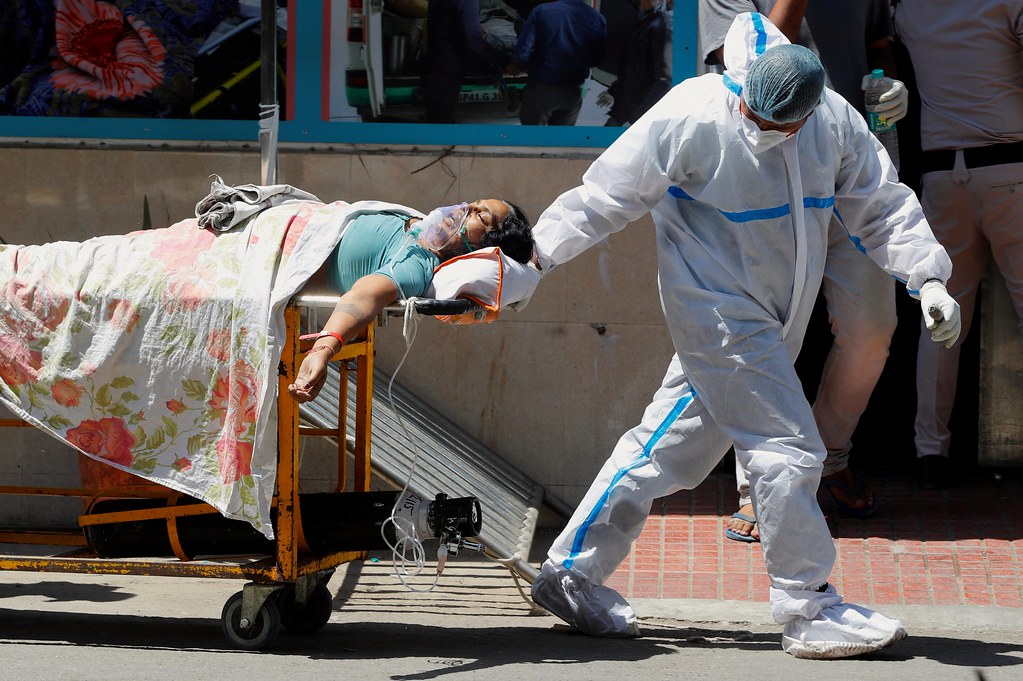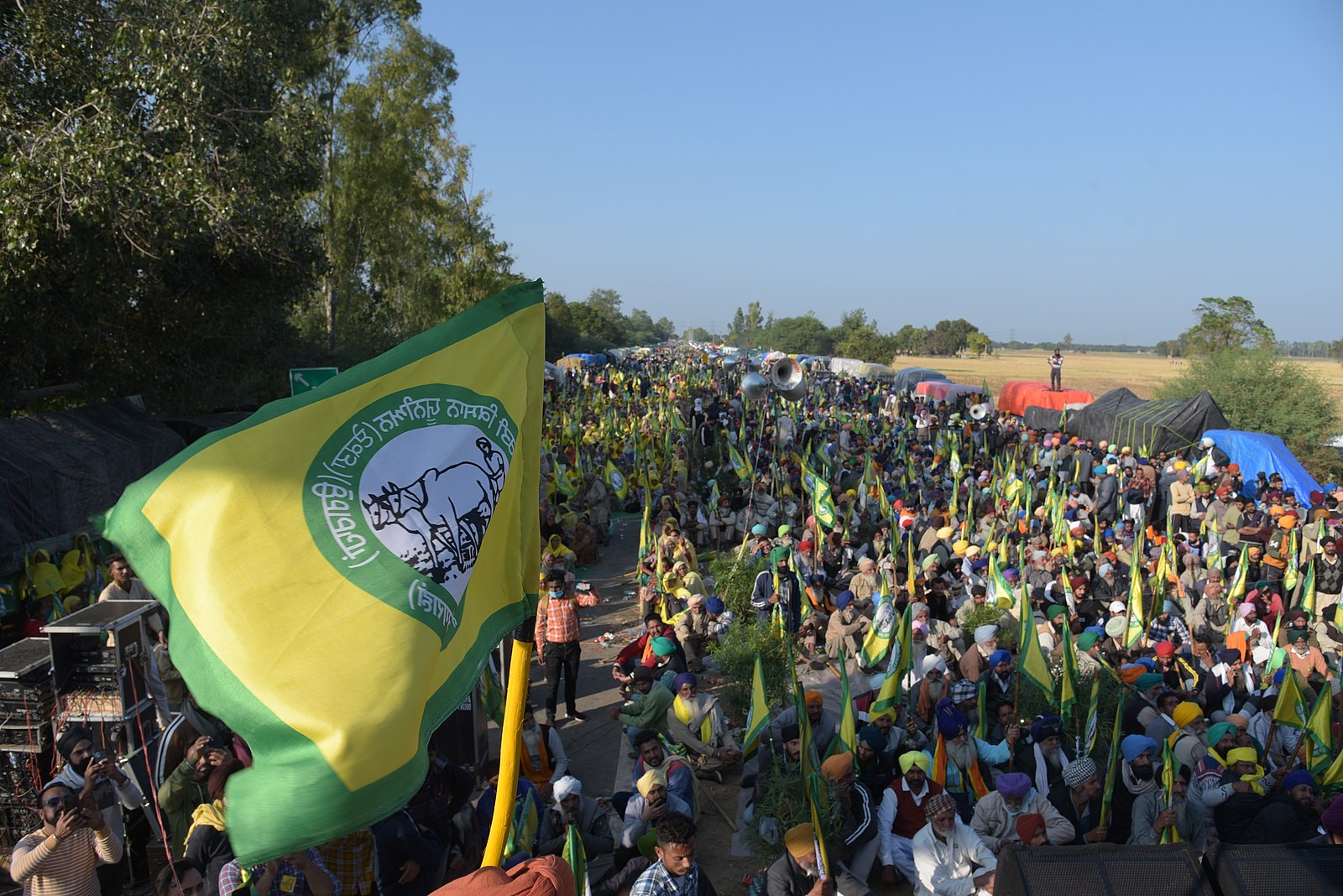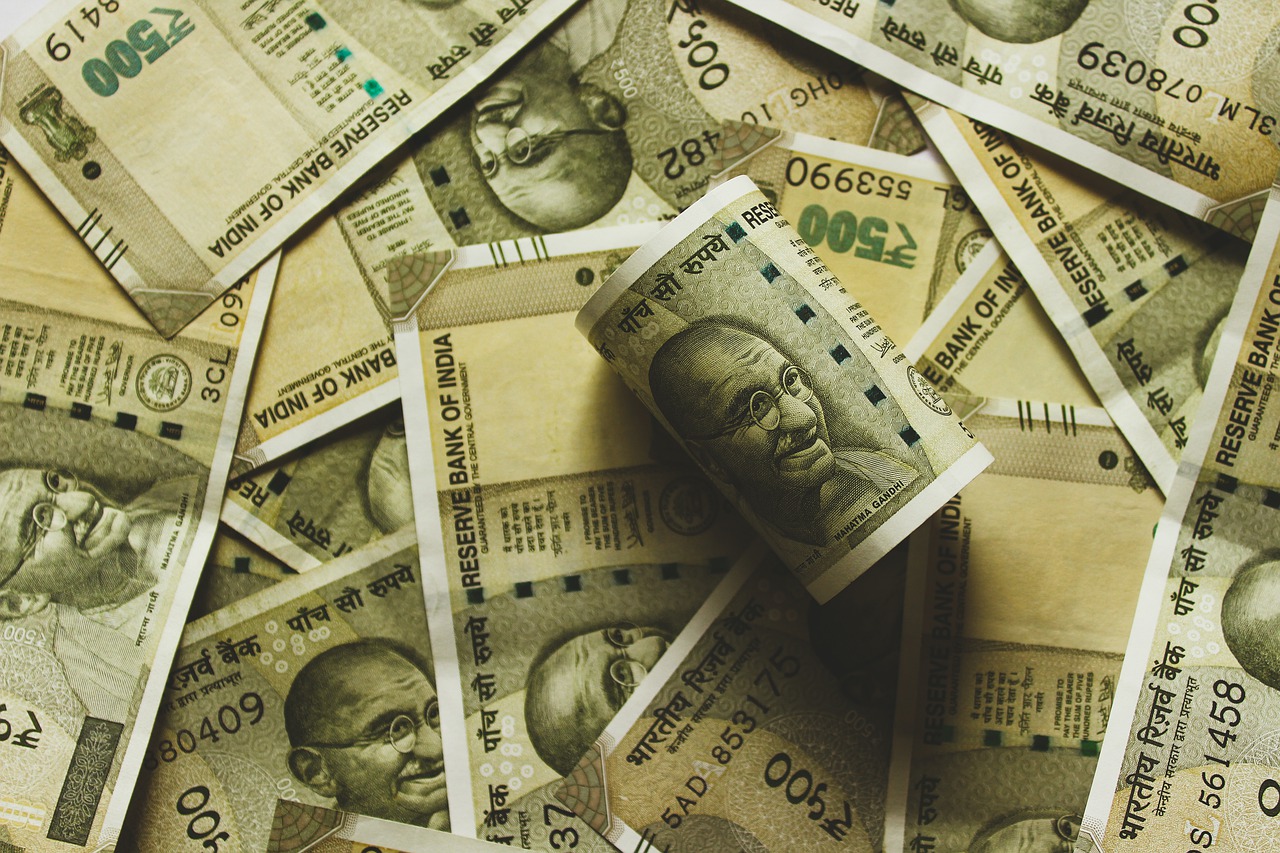The misery of the Indian masses has been aggravated by the Modi-led BJP government in the past seven years, and compounded further by the pandemic. The introduction of the Goods and Services Tax (GST); demonetisation; and the abrupt, unplanned lockdown have worsened the conditions of the masses.
The closure of factories, layoffs, retrenchments, and driving down wages have become the norm since COVID-19. The unemployment rate has reached the highest level in 45 years. But the economic impact of the pandemic has not prevented Modi from serving corporate interests.
Measures such as the 7.6 billion INR (101 Million USD) stimulus package Finance Minister Nirmala Sitharaman announced in 2020 to rescue the economy have not averted an economic slump. Rather, they have propped up the Indian capitalists and enriched corrupt state officials, while ordinary people have been lumbered with the brutal consequences of this historic crisis.
Now, the government of Modi and Home Minister Amit Shah is deepening attacks on the working class and seeking to privatise whole new swathes of the public sector.
National Monetisation Pipeline
Recently, the Modi government announced The National Monetisation Pipeline (NMP) to lease out ‘idle’ public assets to private contractors in order to raise government revenue. State sources forecasted that this measure would fetch 6 trillion INR (80 billion USD), and there will not be any transfer of assets to the private sector.
According to the media reports, public assets up for lease include national highways, gas pipelines, 15 railway stations, 25 airports, government shares in 160 coal mining projects, 31 projects in nine major ports, 21 million metric tons of warehousing capacity assets, two national stadiums and two regional centres. The government has also earmarked the equivalent of $2bn USD to redevelop ITDC hotels and other state properties to attract lucrative investors.
 Despite the government’s assurances, the National Monetisation Pipeline is a backdoor to wholesale privatisation / Image: public domain
Despite the government’s assurances, the National Monetisation Pipeline is a backdoor to wholesale privatisation / Image: public domain
The NMP assets also include 26,700 km of roads, railway stations, train operations and tracks; 28,608 circular kilometres of fibre assets; 14,917 mobile towers in the telecoms sector; 8,154 km of natural gas pipelines and 3,930 km of petroleum pipelines. The government has already privatised 1,400 km of national highways.
Despite the government’s assurances, this policy is clearly a backdoor to wholesale privatisation. The NMP will replace small vendors with corporate outlets. Privatisation will raise the price people will have to pay for products and services. Furthermore, many jobs will be casualised, resulting in the loss of the right to collective bargaining – thanks to the recent anti-trade union legislation passed by the Modi government. NMP will increase unemployment and misery for workers and the poor at one pole, while accumulating capital in wealthy private hands at the other.
Selling the family silver
On top of this, the Modi government is planning to merge public banks and privatise them. There is a huge opposition from bank employees against this merger. Some 90,000 bank workers protested earlier this year against mergers and privatisation. Almost every Indian family has invested their money in the state-owned Life Insurance Corporation of India (LIC), which is earmarked for privatisation. The LIC has assets worth 38 trillion INR (500 billion USD), which will be gifted to the private sector.
Parliament also passed the Marine Fisheries Bill 2021. This policy will open marine resources and seas for exploitation by multinational corporations (MNCs). This act makes it difficult for traditional fishermen to get a license and prevents them from fishing more than 12 nautical miles from the coast; a limit not applied to large corporations. India has a huge coastal region and many ports, which have now been thrown open to MNCs.
Although the government’s own economic indicators show a spike in GDP, there is a significant rise in unemployment, with job security undermined by COVID-19. The level of employment in service industries (IT, hospitality, etc.) is higher than in the industrial sector, with a high level of exploitation and no trade union rights.
As per a report by the Centre for Monitoring the Indian economy, the unemployment rate in India as of August has risen to 8.32 percent, from 6.95 percent in July – amounting to 1.5 million jobs slashed in a month. The government is now cooking unemployment figures and showing a September reduction to 6.86 percent, but even this would not be at pre-pandemic level. Job losses are pushing families into destitution.
And these figures only apply to formal sectors. In India, 80 percent of the population depends on the informal economy, i.e. unorganised sectors operating off the government’s books, which have been decimated by the pandemic.
The rise in petrol prices is adding fuel to the fire. Fuel taxes in India are the highest in the world, at 260 percent. A policy of deregulation has led to a constant increase of fuel prices. At the same time, subsidies for liquid petroleum gas have been cut. This led to huge increases in liquid petroleum gas (LPG) prices for consumers, which has led to inflation in the economy.
The Modi-Shah duo has no solutions to the economic woes of the masses. Instead, they are continuing with the same failed policies of privatisation, liberalisation and globalisation. All this financial speculation, disinvestment and increase in Foreign Direct Investment (FDI) have not led to growth in the productive economy; it has simply stuffed the pockets of the wealthy.
Monopoly capitalism
All the developing countries, including India, were forced to introduce structural adjustment policies to liberalise their economies, and follow the dictates of the World Bank and IMF. This policy was viciously introduced in India by Finance Minister Manmohan Singh in 1991, who later became the Prime Minister for a decade, paving the way for the victory of the right-wing Modi government in 2014.
Three decades of market reforms led to widespread privatisation, with key state-owned sectors like coal, power, mining, railways, infrastructure, and defence opened up to MNCs to encourage FDI. This policy also led to massive public and private debts.
 Thousands have died during the pandemic due to a lack of access to oxygen canisters, while also drowning in crippling debt / Image: Ninian Reid, Flickr
Thousands have died during the pandemic due to a lack of access to oxygen canisters, while also drowning in crippling debt / Image: Ninian Reid, Flickr
Successive under-investment in state-owned enterprises was followed by showering MNCs and the private sector with public money and resources. As a result, the vampiric private sector sucked the blood out of the public sector.
The state-owned telecoms company BSNL was destroyed by private companies AIRTEL, Vodafone, Reliance Jio. It was devastated by the conscious policy of successive governments in the interests of private companies. Even 4G broadband is not issued to BSNL by the government. This phenomenon can be seen in every sector of the economy.
The Rafale deal is another example, in which 36 multi-role fighter aircrafts were bought by the Indian government for €7.8 billion from Dassault Aviation, a French company. An agreement to provide for their operation and maintenance with Hindustan Unilever Ltd. (HUL), a public sector company related to aerospace, was cancelled. At the behest of Modi, it was later transferred to Reliance Group, led by Anil Ambani, who is Modi's lickspittle corporate businessman.
The central and state governments throw out the red carpet for MNCs by forming Special Economic Zones (SEZ), in which labour laws do not apply. The workers here are exploited for cheap labour and have no right to form unions. Environmental laws are also diluted to suit the interests of large corporations. SEZs are given public resources like electricity, land, water etc., at highly subsidised rates. These policies have led to increased income inequality, and to an increase in the role of the large corporate sector in every sphere of the economy.
Health and education are privatised at a huge scale and have become inaccessible for the working class. Funding for health and education in India is minimal compared to other poor countries. During the COVID-19 pandemic, the vast majority of the population in India had to depend on the private sector due to a lack of adequate public health infrastructure. The private healthcare sector is in a far-worse state, and is highly expensive. Thousands have died during the pandemic due to a lack of access to oxygen canisters, while also drowning in crippling debt.
The pandemic never prevented the wealthiest from accumulating more wealth. According to an Oxfam report, Indian billionaires increased their wealth by 35 percent by up to 3 trillion USD during the pandemic. According to a 2017 report, the top 10 percent of the Indian population holds 77 percent of the total national wealth.
The latest report by the IIFL Huran rich list says that the wealth of Gautam Adani jumped to Rs. 5.1 lakh-crore (100,000 x 10,000,000,000), only second to Mukesh Ambani (Rs. 7,18,000 crore) among Indians. Shantilal Adani’s wealth increased to Rs. 1.40 lakh crore. The list also states that, across 119 Indian cities, 1,007 individuals have a net worth of Rs.1000 crore or more. The wealth of the Serum Institute of India, headed by Cyrus Poonawalla, increased 74 percent to 1.63 lakh crore. This company also administers 90 percent of vaccines in India, and has turned massive profits off the back of this terrible health crisis.
Provocations and farm laws
The corrupt, pro-capitalist, anti-people Modi government has launched a series of initiatives that serve as major provocations to a population crushed by the economic and health crisis. For instance, there is the Central Vista project: a new parliament building that will be located between the president's office (Rastrapathi Bhavan) and India gate in New Delhi. The current parliament building will be converted into a museum.
The new parliament building, with a footprint 64,500 square meters, will have a grand constitution hall. Amidst the pandemic, even when thousands were struggling for oxygen beds, and a slew of dead bodies were floating down the Ganges river, the construction continue. The corrupt supreme court gave the go-ahead to the construction project in January 2021. The work continued while the impact of the pandemic in India was at its worst. It showed everyone that the government’s priority was not to protect public health, but rather to flaunt the wealth and hubris of Modi’s political clique.
A striking feature of the new parliament building will be that it will have huge boundary walls and will be inaccessible to the public. This is no accident. The ruling class intends to ensure their new vanity project is safe from protest.
Furthermore, the so-called monsoon session in parliament just passed a spate of 17 bills without any discussion, including the General Insurance Amendment Bill, the Airport Bill and Fisheries Bill. Even the corrupt supreme court of India raised concerns about the passing of bills in this manner. The General Insurance Bill intends to sell the shares of state-owned insurance companies, including the state-owned Life Insurance Corporation (LIC), wose asset of 38 lakh-crores, will be sold to private shareholders.
There were token protests from opposition parties like Congress, CPI, CPM, TMC and DMK against these bills by not referring them to select committees. The main Stalinist parties always seek to confine their struggles within the boundaries of the corrupt parliament, judiciary or state administrative measures.
Recently Modi used Israeli made spy software Peagasus to spy on his opponents. The opposition again resorted to token protests. The corrupt judiciary also piled in with the condemnation, and “demanded a reply from the Modi government”. Modi turned a deaf ear, terming this opposition an international conspiracy to defame India, and resumed his illicit surveillance.
As we have reported previously, farmers have been protesting against three reactionary central farming laws for the past 10 months on the outskirts of Delhi. The Samyuktha Kisan Morcha, the umbrella organisation of farmers, called for a national bandh (total shutdown) on 27 September, which gathered a huge amount of support from all sections of the population.
Subsequently, there was a brutal attack against protesting farmers on 3 October 2021, in which four people, including a journalist, were run over and killed by a vehicle driven by the BJP leader's son. About 600 farmers have died up until now, after protesting against the central farm laws. These laws would lead to privatisation of the agricultural sector, placing it under the control of monopoly capitalists.
Farmers are protesting for a guaranteed price for their crops. Government procurement through the current mandi (middle-men) system will be abolished. And although this system was rife with cronyism and exploitation, the private market won’t guarantee a minimum support price (MSP.) Previous nationalisation of banks prevented an onslaught of capital in agriculture, but there has been an extension of capitalist interests in the sector following the policy of the so-called green revolution.
On top of that, the input costs (the price of seeds, fertiliser etc.) have risen. The farmers and agricultural labourers are put into debt due to privatisation. Reports show that there have been 600,000 farmer suicides since 1995. The farm laws will put farmers at the mercy of big corporations.
The way forward
The Modi-Shah duo and the corporate media promise that the National Monetisation pipeline, and privatisation of the public sector will improve the efficiency of administration, increase employment, and bring in additional revenue etc. This is evidently a total lie.
Ever since the liberalisation of the economy in 1991, there has been an increase in the role of the private sector. The economy has been opened to MNCs and increased FDI in strategic sectors like defence, coal, steel, telecoms, which were previously under state control. There has been no revitalisation or increase in employment: in fact, we’ve seen the opposite.
 The farmers’ movement in the last period has shown the way, with its determined battle against the brutal Modi regime using class struggle methods / Image: Randeep Maddoke, Wikimedia Commons
The farmers’ movement in the last period has shown the way, with its determined battle against the brutal Modi regime using class struggle methods / Image: Randeep Maddoke, Wikimedia Commons
The Modi regime's only solutions for the increasing deficit and huge government debt are more privatisations, increases in indirect tax, and increasing the burden on the shoulders of the masses. The disinvestment policy of the current and previous governments has led to exploitation of natural resources, and provided private companies easy access to cheap resources built under the public sector.
The IMF projects the Public debt-to-GDP ratio will increase to almost 90 percent in India in the next period. The fiscal deficit currently stands at Rs. 4.68 lakh-crore, or 31.1 percent of the budget estimate. The decline in the economy and the COVID-19 lockdown have not led the government to reduce its defence expenditure. This currently stands at $72.9 billion, making India, along with China, the USA, and Russia, the most prominent military spenders in 2020.
These policies of disinvestment and privatisation will not aid economic growth. Instead, any new revenue will be plugged into debt repayments under the imperialist capitalist system. India, being integral to this world economy, is also facing the impact of the world capitalist crisis. There is huge inflation, stagnation, an energy crisis, unemployment, a lack of purchasing power etc. Again, the Modi-Shah government’s only response is to put the public sector to sale.
Modi's jargon of ‘Made in India’ and ‘Self Reliance’ are all lies to hoodwink the masses. The burden of the present capitalist crisis is being piled on the backs of the working class by cutting subsidies on food, gas, electricity, and attacking labour rights. At the same time, Rs.1.45 trillion in tax cuts were given to corporations in 2019.
All roads lead to ruin under capitalism. The only way for the masses to overcome this crisis is to expropriate the ill-gotten wealth of the MNCs and billionaires, and place the main levers of industry under the democratic control of the working class as part of a planned economy.
Trotsky, while commenting about the inevitability of the socialist revolution in his article ‘Marxism in our times’, said the following:
“[The] economy can be rationalised only through the union of technique at the height of science and government at the service of society. Such a union is possible, provided technique and government are liberated from the slavery of private ownership. That is where the great revolutionary task begins. In order to liberate technique from the cabal of private interests and place the government at the service of society, it is necessary to ‘expropriate the expropriators.’ Only a powerful class, interested in its own liberation and opposed to the monopolistic expropriators, is capable of consummating this task. Only in unison with a proletarian government can the qualified stratum of technicians build a truly scientific and a truly national, i.e., a socialist economy.”
The farmers’ movement in the last period has shown the way, with its determined battle against the brutal Modi regime using class struggle methods. All the oppressed and exploited layers of Indian society must unite, and commit themselves to the “great revolutionary task” of wresting the essential levers of the economy from the parasites, and managing them democratically for the good of all.

